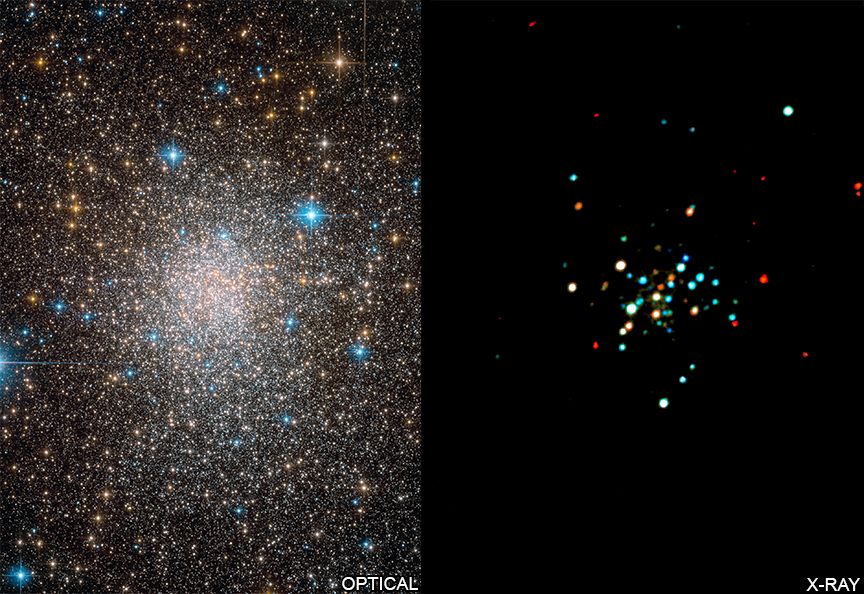NASA | MSFC | SAO | Chandra X-ray Observatory | 2020 Feb 20
A double star system has been flipping between two alter egos, according to observations with NASA's Chandra X-ray Observatory and the National Science Foundation's Karl F. Jansky Very Large Array (VLA). Using nearly a decade and a half worth of Chandra data, researchers noticed that a stellar duo behaved like one type of object before switching its identity, and then returning to its original state after a few years. This is a rare example of a star system changing its behavior in this way.
Astronomers found this volatile double, or binary, system in a dense collection of stars, the globular cluster Terzan 5, which is located about 19,000 light years from Earth in the Milky Way galaxy. This stellar duo, known as Terzan 5 CX1, has a neutron star (the extremely dense remnant left behind by a supernova explosion) in close orbit around a star similar to the Sun, but with less mass.
In this new image of Terzan 5 (right), low, medium and high-energy X-rays detected by Chandra are colored red, green and blue respectively. On the left, an image from the Hubble Space Telescope shows the same field of view in optical light. Terzan 5 CX1 is labeled as CX1 in this Chandra image. ...
The MAVERIC Survey: A Transitional Millisecond Pulsar Candidate in Terzan 5 ~ Arash Bahramian et al
- Astrophysical Journal 864(1):28 (2018 Sep 01) DOI: 10.3847/1538-4357/aad68b
- arXiv.org > astro-ph > arXiv:1807.11589 > 30 Jul 2018
- Monthly Notices of the RAS 451(2):2071 (Aug 2015) DOI: 10.1093/mnras/stv1054
- arXiv.org > astro-ph > arXiv:1505.01862 > 07 May 2015 (v1), 26 May 2015 (v2)
IGR J17480-2446 Located in the Globular Cluster Terzan 5 ~ Laura S. Ootes et al
- Monthly Notices of the RAS 487(1):1447 (Jul 2019) DOI: 10.1093/mnras/stz1406
- arXiv.org > astro-ph > arXiv:1805.00610 > 02 May 2018 (v1), 21 May 2019 (v2)
